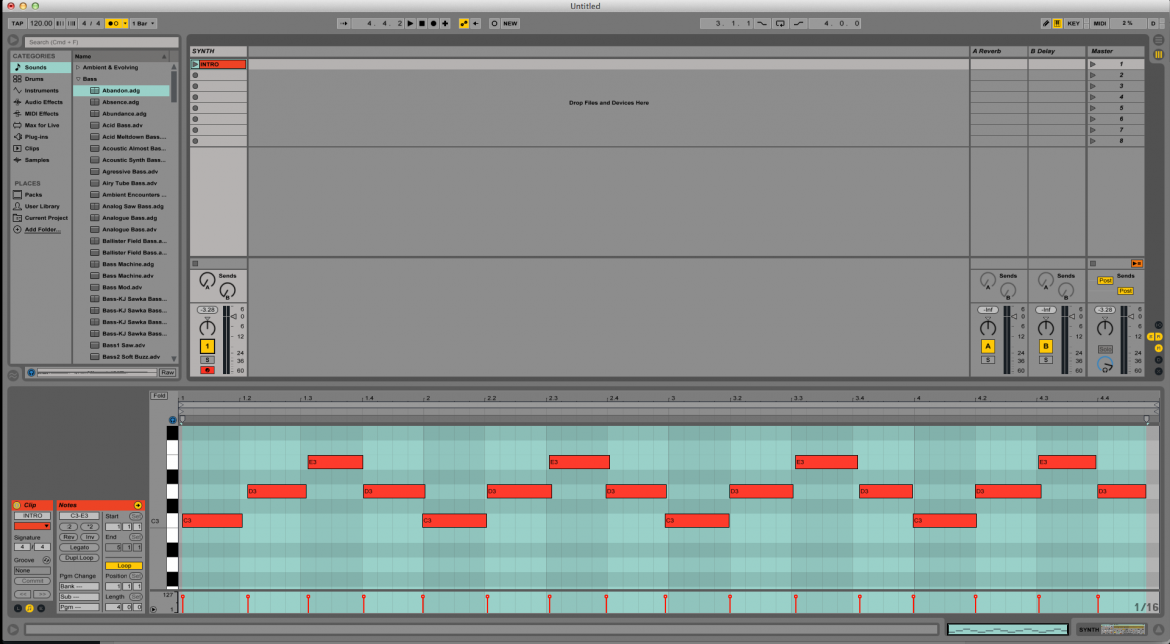
If you use Ableton Live in conjunction with the Ableton Push or Push 2, please refer to this article about setting up Sample with the Push/Push 2 controller. NOTE: If you're using a MIDI keyboard controller, make sure to change the octave to C1 for the range is between C1 and D#2 Usually you would want the samples to cover the whole range of whatever instrument you. Press the letter Z twice on your keyboard to have the computer midi keyboard in the correct octave range (By default, Ableton Live will be set to C3-D4, while Serato Sample sits on C1-D#2) the cues will now start from the letter A on the keyboard, for 16 sequential pads. The zone area is how many notes the sample will cover or be transposed.(If necessary, ensure Computer MIDI Keyboard is enabled by pressing CTRL + SHIFT + K, or checking it's enabled under Options -> Computer MIDI Keyboard) Fold the MIDI Note Editor to any Scale Create a MIDI clip and draw all the notes of the scale you want to play in.Load a sample either by clicking 'Load' or drag in a sample.Insert Serato Sample to an empty MIDI track.Go to the Plug-Ins list and select Serato Sample, if you're loading a VST, first go to 'local' and then select 'Serato Sample', f or Audio Units go to 'Serato' and then select 'Serato Sample'.Your device could be anything from a basic 12-note keyboard to an Ableton push.

Find your device under Control Surface and Input, and turn Track on for that device. Get started with Live or go deeper into the details whatever stage you’re at you’ll find videos to help you take your next steps with Live. Go to Preferences, click the Link, Tempo, MIDI tab on the left-hand side. NB: If you are using Ableton 10.9 or below, these plugin options will be located in the 'File/Folder' tab of Ableton's Preferences menu. To set up a MIDI device in Ableton, plug in your MIDI device to your computer. If you have installed Serato Sample as a VST turn on 'Use VST Plug-In System folder' (if you have a custom location for VSTs turn on the 'Use VST Plug-Ins Custom Folder' as well) or turn on 'Use Audio Units' if you have installed Sample as an AU plug-in. I’ll play with the rhythm so it hits on the one for a bit, and then on the 2nd bar, I’ll do a little scale run-up to A0. Let’s start with the root note of our key, F Minor.


ABLETON NOTE TUTORIAL PRO
Open the preferences menu for Ableton Live, then go to the 'Plug-Ins' preferences menu. Let’s take a look we’ll be using Ableton Live, but you can follow along in FL Studio, Logic Pro X, or any other DAW.Seed to Stage Ableton Online Courses - https://c. Start by selecting from the various arpeggiator patterns in the ‘ Style ‘ drop-down box. Finally, customize the settings of the Arpeggiator plug-in to create an arpeggiated melody from your chord progression. Make sure that you've installed Serato Sample, as per the Installation Guide You dont need an MPE controller to explore new musical possibilities with Ableton 11s 'Note Expression. Head on over to the browser, select the ‘ MIDI Effects ‘ category and double-click on ‘ Arpeggiator ‘.Screenshots in this guide are using the latest current iteration at the time of writing, of Ableton Live 10.1.9.


 0 kommentar(er)
0 kommentar(er)
